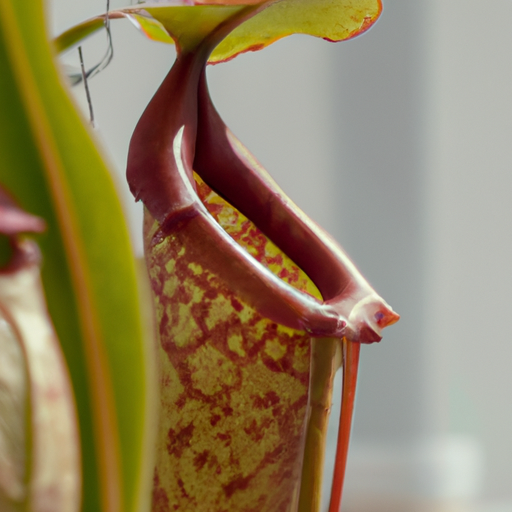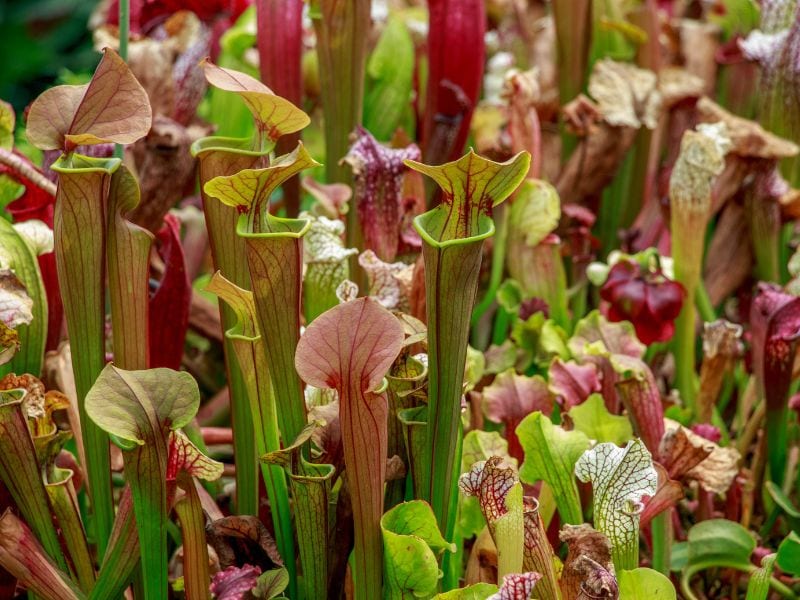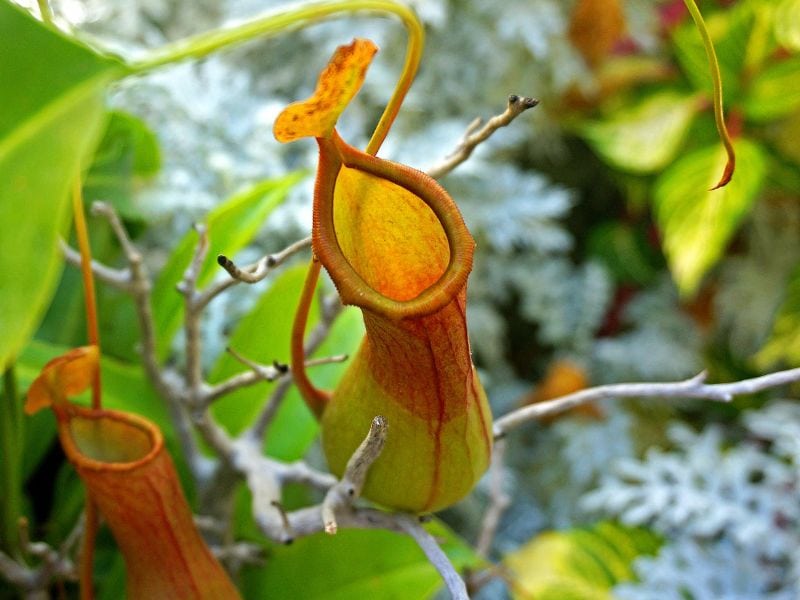Table of Contents
How to Identify Different Types of Pitcher Plants

Pitcher plants are fascinating carnivorous plants that have evolved to capture and digest insects. There are many different types of pitcher plants, each with its own unique characteristics. Here’s how to identify the different types of pitcher plants.
The first type of pitcher plant is the Sarracenia, which is native to North America. These plants have tall, trumpet-shaped pitchers that can be up to a foot tall. The pitchers are usually green or red in color and have a lid-like structure at the top. The pitchers are filled with a sweet-smelling liquid that attracts insects.
The second type of pitcher plant is the Nepenthes, which is native to Southeast Asia. These plants have pitchers that are usually shaped like a bottle and can be up to two feet tall. The pitchers are usually green or red in color and have a lid-like structure at the top. The pitchers are filled with a sweet-smelling liquid that attracts insects.
The third type of pitcher plant is the Cephalotus, which is native to Australia. These plants have small, cup-shaped pitchers that can be up to four inches tall. The pitchers are usually green or red in color and have a lid-like structure at the top. The pitchers are filled with a sweet-smelling liquid that attracts insects.
The fourth type of pitcher plant is the Darlingtonia, which is native to the western United States. These plants have tall, tube-shaped pitchers that can be up to two feet tall. The pitchers are usually green or red in color and have a lid-like structure at the top. The pitchers are filled with a sweet-smelling liquid that attracts insects.
By looking at the shape, size, and color of the pitchers, you can easily identify the different types of pitcher plants. With a little practice, you’ll be able to tell them apart in no time!
The Benefits of Growing Pitcher Plants in Your Home
Growing pitcher plants in your home can be a fun and rewarding experience. Not only are they beautiful and unique, but they also offer a variety of benefits. Here are some of the advantages of having pitcher plants in your home:
1. Low Maintenance: Pitcher plants are relatively easy to care for. They don’t require a lot of attention and can thrive in a variety of conditions. All they need is a bright, indirect light, moist soil, and occasional misting.
2. Air Purification: Pitcher plants are great for purifying the air in your home. They absorb toxins and pollutants from the air, making it cleaner and healthier for you and your family.
3. Natural Insect Control: Pitcher plants are natural insect control option. They attract and trap insects, which helps keep your home free of pests.
4. Unique Beauty: Pitcher plants are beautiful and unique. They come in a variety of colors and shapes, making them a great addition to any home.
Growing pitcher plants in your home can be a fun and rewarding experience. Not only are they low maintenance and great for air purification, but they also offer a unique beauty that can’t be found anywhere else. So, if you’re looking for a way to spruce up your home, consider adding some pitcher plants to your decor.

Tips for Growing Pitcher Plants in Different Climates
1. Choose the right species: Different pitcher plant species are adapted to different climates, so it’s important to choose the right one for your area. For example, Sarracenia purpurea is a cold-hardy species that can survive in temperatures as low as -30°F, while Sarracenia flava is more tolerant of warmer climates.
2. Provide plenty of sunlight: Pitcher plants need plenty of sunlight to thrive, so make sure to place them in a spot that gets at least 6 hours of direct sunlight each day.
3. Keep the soil moist: Pitcher plants prefer moist soil, so make sure to water them regularly. If you live in a dry climate, you may need to water them more often.
4. Use a nutrient-rich soil: Pitcher plants need a nutrient-rich soil to thrive, so make sure to use a carnivorous soil mix that is high in organic matter and low in nutrients.
5. Provide adequate drainage: Pitcher plants don’t like to sit in water, so make sure to provide adequate drainage. You can do this by using a pot with drainage holes or by adding a layer of gravel to the bottom of the pot.
6. Fertilize regularly: Pitcher plants and other carnivorous plants need regular, yet light fertilization to stay healthy. Use a balanced fertilizer that is high in nitrogen and low in phosphorus.
7. Protect from extreme temperatures: If you live in an area with extreme temperatures, make sure to protect your pitcher plants from the cold or heat. You can do this by using a cold frame or by bringing them indoors during extreme temperatures.
Following these tips will help you grow healthy pitcher plants in any climate. With the right care and attention, you can enjoy these fascinating plants for years to come!
How to Care for Pitcher Plants in Different Seasons
Caring for pitcher plants in different seasons can be a bit tricky, but with the right knowledge and care, you can keep your pitcher plants healthy and happy all year round! Here are some tips for caring for pitcher plants in different seasons:
Spring: In the spring, pitcher plants need plenty of sunlight and warmth. Make sure to place your pitcher plants in a sunny spot and water them regularly. You can also fertilize your pitcher plants with a balanced fertilizer to give them a boost of nutrients.
Summer: During the summer months, pitcher plants need plenty of water and humidity. Make sure to water your pitcher plants regularly and mist them with a spray bottle to keep the humidity levels up. You can also move your pitcher plants to a shadier spot to protect them from the intense summer heat.
Fall: As the days get shorter and cooler, pitcher plants need less water and sunlight. Make sure to reduce the amount of water you give your pitcher plants and move them to a spot with less direct sunlight. You can also fertilize your pitcher plants with a low-nitrogen fertilizer to help them prepare for the winter.
Winter: During the winter months, pitcher plants need to be kept in a cool, dark place. Make sure to move your pitcher plants to a spot that is away from direct sunlight and keep the temperature between 50-60 degrees Fahrenheit. You should also reduce the amount of water you give your pitcher plants and stop fertilizing them until the spring.
By following these tips, you can keep your pitcher plants healthy and happy in all seasons! Do you have any success stories about growing your own carnivorous plants at home? We would love to hear about it in the comments!


